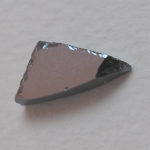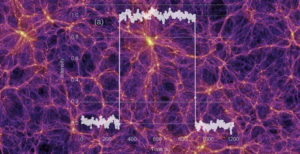A new particle detector design proposed by Berkeley Lab researchers, including Stephen Derenzo, Stephen Hanrahan, and Gregory Bizarri of the Molecular Biophysics and Integrated Bioimaging Division (MBIB) could greatly broaden the search for dark matter into an unexplored realm. Dark matter makes up 85 percent of the total mass of the universe, yet we don’t know its composition.

While several large physics experiments have been targeting theorized dark matter particles called WIMPs, or weakly interacting massive particles, the new detector design could scan for dark matter signals at energies thousands of times lower than those measurable by more conventional WIMP detectors.
The ultrasensitive detector technology incorporates crystals of gallium arsenide that also include the elements silicon and boron. This combination of elements causes the crystals to scintillate, or light up, in particle interactions that knock away electrons.
Derenzo, a senior physicist in MBIB, is the lead author of a study published March 20 in the Journal of Applied Physics that details the scintillation properties of gallium arsenide. MBIB Staff Scientists Stephen Hanrahan and Gregory Bizarri, who is also a senior lecturer in manufacturing at Cranfield University in the U.K., participated in this study. Read the press release in the Berkeley Lab News Center.




